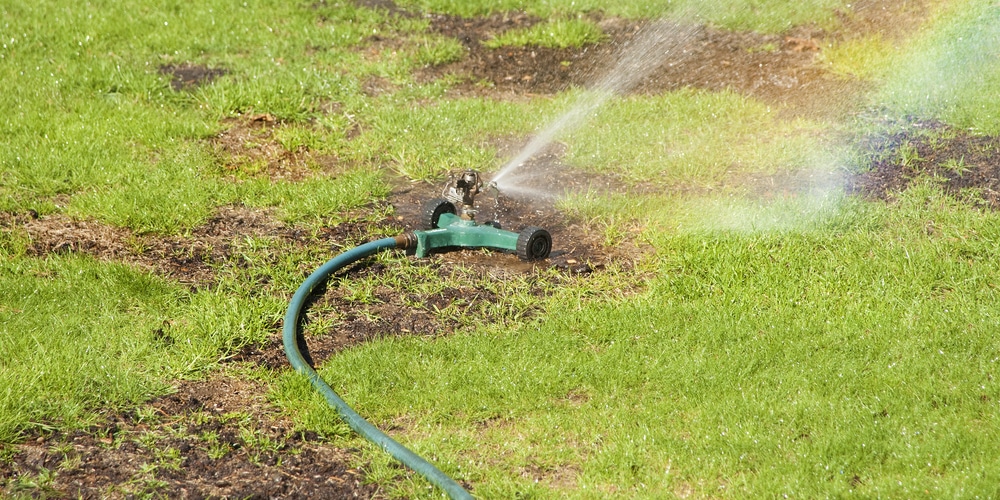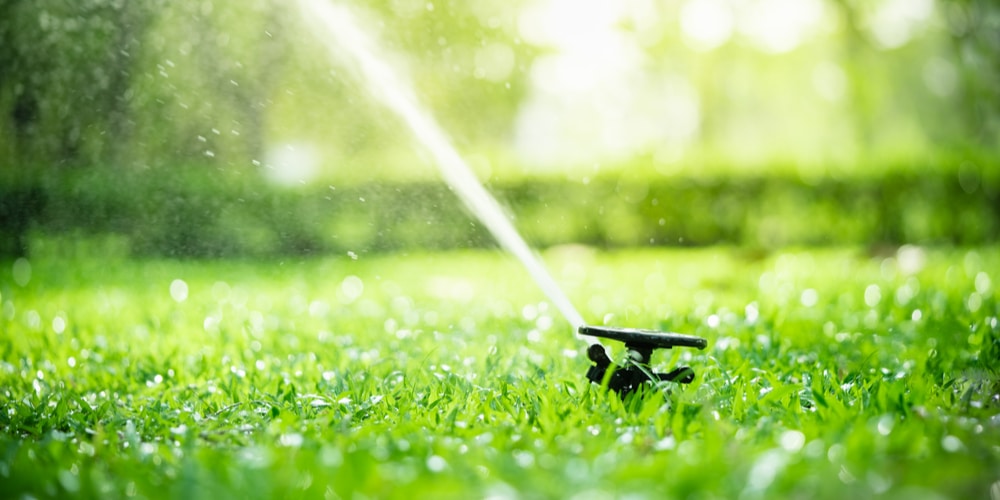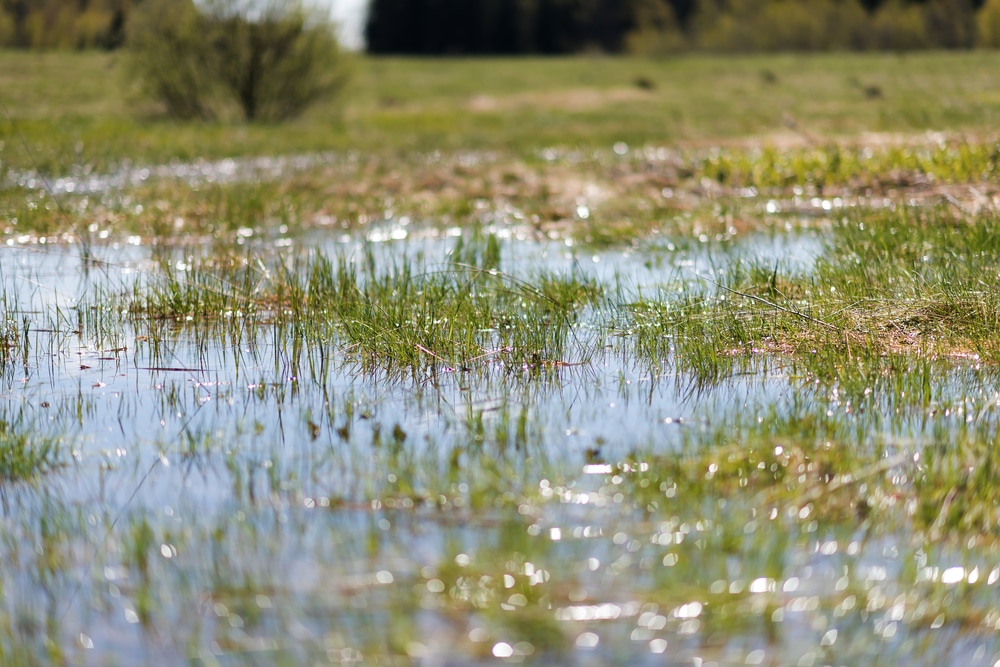Watering Grass Seed: 101
When watering new grass seed, it’s critical to provide enough moisture without causing waterlogging. Here are key points to keep your seedlings thriving:
- Initial Preparation: Before planting, moisten the soil to a depth of 6 to 8 inches.Use a screwdriver test to check soil moisture, ensuring water distribution is even.
- Consistency is Key: Maintain a consistent moisture level in the soil’s top inch.This can typically be achieved by watering lightly two to three times daily. Adjust this schedule based on weather conditions and soil type.
- Watering Technique: Use a gentle spray to avoid disturbing the seeds.Each session should last about 5 to 10 minutes, providing enough moisture without causing runoff.
- Avoid Overwatering: Excess water can suffocate seeds, leading to rot.Ensure soil is moist but not soggy. Tailor your watering to avoid oversaturation, especially after rainfall.
- Best Times to Water: Aim to hydrate your seeds in the early morning and late afternoon.This prevents evaporation during the day and fungus growth overnight.
- Monitor and Adjust: Observe your lawn’s response.Dry patches need more water, while puddles indicate overwatering. Fine-tune your watering to meet your lawn’s needs.
Establishing a Watering Schedule
Creating an optimal watering schedule for your new grass seed is crucial for seed germination and healthy lawn establishment. You’ll need to monitor the specific watering needs based on the grass type and local weather conditions.
Determining Watering Frequency
- Initial Watering: Immediately after sowing, water the seeds for about 5 to 10 minutes.
- This initial watering helps to moisten the soil without causing runoff that could displace the seeds. The goal is to keep the top inch of soil consistently moist but not soggy.
- Subsequent Watering: In the first few weeks, it may be necessary to water lightly but frequently, up to several times a day.
- Gradually reduce the frequency as the grass establishes, shifting towards deeper, less frequent watering sessions to encourage strong root development.
Assessing Environmental Influences
- Climate: If you live in a dry area, your new grass will need more frequent watering compared to a humid climate.Rainfall should be factored into your watering schedule to avoid overwatering.
- Soil Type: Sandy soils drain quickly and may require more frequent watering.Clay soils retain moisture longer, thus requiring less frequent watering.
- Season: Grass seed planted during the hotter seasons will need more water compared to cooler seasons.Additionally, avoid watering during the hottest part of the day to minimize evaporation.
Identifying Overwatering Signs and Solutions

Proper hydration is essential for new grass seed, but too much water can be just as detrimental as too little. Learn to identify the symptoms of overwatering and take the right steps to correct the issue, ensuring a lush, healthy lawn.
Recognizing Overwatering Symptoms
- Soggy Soil: Avoid a squishy feeling underfoot days after watering.
- Yellowing Grass: Be alert for blades turning yellow, a sign of water suffocation.
- Mold or Fungi: Watch for these growths, which thrive in constant moisture.
- Insect Infestations: Excess water can attract pests that damage grass.
Corrective Measures for Waterlogged Grass
Upon spotting the signs of overwatering, take immediate steps to address the problem:
- Reduce Watering: Modify your schedule—allow the top inch of soil to dry out between waterings.
- Aeration: Allow the lawn to breathe by breaking up compacted soil.
- Check Irrigation: Ensure even distribution and correct any system leaks.
Balancing Soil Moisture and Drainage
Proper moisture levels and drainage are crucial to the success of your new grass seed. Achieving this balance involves improving soil conditions and selecting the right watering tools.
Improving Soil Conditions
- Test soil drainage by soaking an area and checking how quickly water dissipates.
- Amend heavy clay soils with organic material such as compost to enhance permeability.
- For sandy soils that drain too quickly, incorporate organic matter to increase water retention.
- Ensure a level surface to prevent pooling and areas of excessive dryness.
Selecting the Right Tools for Watering
- Use a sprinkler system that provides even coverage without overpowering fragile seeds.
- Consider soil moisture meters to monitor the soil’s wetness and adjust your watering regimen accordingly.
- Invest in a timer for your sprinkler system to maintain consistent moisture levels, especially during germination.
- Choose a watering wand or fine mist nozzle to gently water without causing erosion or seed displacement.
Frequently Asked Questions
In establishing a healthy new lawn, your watering strategy is critical. Let’s address some common queries to ensure your grass seed gets just what it needs.
How often should newly planted grass seed be watered in high temperature conditions?
In high-temperature conditions, it’s essential to water your newly planted grass seed up to four times a day, keeping the soil consistently moist but not overly saturated. It ensures that the germinating seed has enough water to counteract the quick drying effect of the heat.
What is the recommended watering frequency for grass seed during autumn?
During autumn, you should reduce watering to once or twice a day as the cooler weather means less evaporation and the soil retains moisture for longer. This allows for a gradual establishment of roots without waterlogging the seeds.
For how many weeks after planting should new grass seed be watered?
Continue watering your new grass seed for at least six to eight weeks post-planting. By this time, the seeds should have germinated, and young grass will start establishing a more robust root system capable of accessing deeper soil moisture.
What are the consequences of missing a day of watering on new grass seed?
Missing a single day of watering can disrupt the germination process of grass seed, causing it to dry out and potentially die, especially during warm and windy days. Consistent moisture is key, especially in the first two weeks after sowing.
Can overwatering damage newly seeded grass, and if so, what are the signs?
Overwatering can indeed harm newly seeded grass. Signs include:
- A mushy, soggy lawn surface
- Seed runoff or displacement
- A thinning lawn or patches where seeds have failed to germinate
- Proliferation of fungi and lawn disease
How can I determine if my new lawn is receiving too much water?
To gauge if your newly seeded lawn is overwatered, check for:
- Puddles of standing water
- The seedbed is constantly soaked
- The lawn feels spongy when you walk on it
- Visible signs of mold or fungus growth
Last update on 2025-06-06 / Affiliate links / Images from Amazon Product Advertising API




